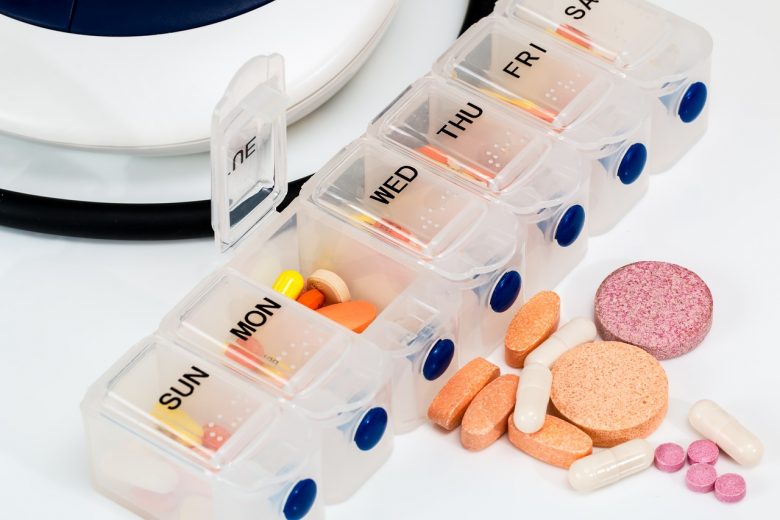
A new delivery system for HIV medications could allow once-a-week consumption of drugs typically taken daily.
The issue: Antiretroviral therapy, the recommended treatment for human immunodeficiency virus (HIV), slows the progression of the disease by suppressing the virus. As antiretrovirals reduce the amount of virus, or “viral load,” in the body, they also work to reduce the risk of transmission.
HIV-negative people at risk of contracting the infection also can take antiretrovirals. When taken consistently, this regimen, called pre-exposure prophylaxis (PrEP), reduces the risk of transmission through sex by over 90 percent.
Adherence to a medication schedule is essential not only for followers of the PrEP regimen but also for HIV-positive individuals taking the drugs. But daily pill regimens can prove challenging to follow, and worldwide, new infections and HIV-related deaths continue to mount. In 2016 alone, there were 1.8 million new infections globally, according to the Joint United Nations Program on HIV/AIDS (UNAIDS). A team of researchers intent on upping adherence and stopping the spread of HIV set out to simplify the schedule.
An academic study worth reading: “Development of an Oral Once-Weekly Drug Delivery System for HIV Antiretroviral Therapy,” Nature Communications, 2018.
About the study: A group of academics, led by scientists at MIT, worked to develop a new technology to provide a week’s worth of antiretrovirals in a single dose. They designed a system that stays intact over the span of many days in the gastrointestinal tract. Then they tested the system in pigs, checking blood drug levels, to demonstrate proof of concept.
Key findings:
- The team developed a design that consists of a six-pronged star. The arms of the star can be folded such that the device fits into a capsule. The capsule shell dissolves in the stomach, at which point the star unfolds. The device is large enough that it remains in the stomach for days while each arm of the star releases drugs at different rates.
- Testing the device in pigs, the scientists found sustained levels of antiretrovirals in the bloodstream for a week.
- The researchers point out that despite similarities between pig and human stomachs, the model has yet to be tested in humans, let alone humans with HIV, where it might work differently.
- The researchers estimate that a weekly PrEP regimen would boost efficacy by 20 percent as compared to daily treatment. Taking South Africa as an example, they suggest it could prevent about 200,000 additional infections over the span of 20 years.
Other resources:
- The International Federation of Journalists has a media guide with recommendations and advice for reporting on HIV/AIDS.
- The Centers for Disease Control and Prevention collect surveillance data and produce reportsannually on HIV infection across the country.
- AIDSinfo, a website of the S. Department of Health and Human Services, offers fact sheets, infographics and a glossary on HIV/AIDS.
- The National Institute of Allergy and Infectious Diseases, part of the National Institutes of Health, highlights researchon HIV/AIDS.
Related research:
- A review of another alternative model for HIV treatment delivery was published in 2016 in Current Opinion in HIV and AIDS, “The Promise and Pitfalls of Long Acting Injectable Agents for HIV Prevention.” The authors suggest that this technology might increase adherence, but does not completely eliminate the issue, due to the need for repeat dosage.
- Another delivery model, in which antiretrovirals are applied to the skin, was tested against oral therapy in a study published in 2015 in the New England Journal of Medicine. That study, “Tenofovir-Based Preexposure Prophylaxis for HIV Infection among African Women,” found that none of the methods tested reduced transmission rates compared to the placebo groups because only a small number of people followed the treatment plan.
- A review of studies on PrEP, published in the American Journal of Preventive Medicine in 2013, “Adherence to Antiretroviral Medications for HIV Pre-Exposure Prophylaxis: Lessons Learned from Trials and Treatment Studies,” highlights trends in adherence among various groups involved. For example, some studies found younger people were less likely to adhere to PrEP.
- A 2017 study, “Social Determinants of HIV Disparities in the Southern United States and in Counties with Historically Black Colleges and Universities (HBCUs), 2013-2014,” considers these academic institutions a potential partner in fighting the spread of HIV due in part to their location.
